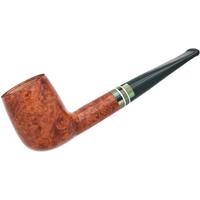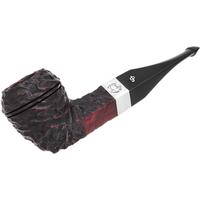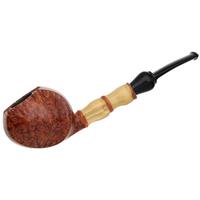An Illustrated Guide to Buying a Good $20 Pipe
- Thread starter Briar Lee
- Start date
You are using an out of date browser. It may not display this or other websites correctly.
You should upgrade or use an alternative browser.
You should upgrade or use an alternative browser.
You can't blast flaws like these. You'd just end up with a larger hole. Dunhill probably sold flaws like this to other companies.These “flaws” are why Dunhill got out his sandblaster.
It’s all in the eyes of the beholder
I like it that they are all silk purses to you
or a school boy let loose with a dremmel.As you say" all in the eye of the beholder"It’s all in the eyes of the beholder
I like it that they are all silk purses to you
even the smooth is full of pits and has a massive flaw in the shank
This would be a rustication. A much different technique than applying high pressure sand to a flaw.Robert L Marx had talented carvers.
Every maker sets his own standards to what he allows to be a "smooth". What some makers call smooth, other makers call firewood.And yet some Algerian was capable of being made smooth.
Sometimes the wood shows obvious flaws in the block form. In that case he'd usually try to design the pipe away from the flaw and cut away the bad portion. Other times the flaw can remain hidden. I've had a beautiful flawless piece I was working on and revealed a huge flaw only upon final sanding. What can start out as a pin prick size flaw can turn into a huge crater. What many don't realize is that a most beautiful, flawless, straight grain, smooth pipe can have a huge flaw hidden beneath the surface. You'll never see it but they can be there hidden forever. I've had stummels that were looking beautiful most of the way through shaping,then all of a sudden you open up a very small flaw, then it just keeps getting bigger as you try to remove it by sanding, then it turns into fire wood. Briar can be cruelI wonder how much they could tell before, they cut one?
Last edited:
I would assume so. For me, grading is the very last step in the pipe making process. Smooth pieces are particularly difficult to grade, for me anyway. Hope for the best, prepare for the worseDo they make one, then decide the grade after?
We actually don’t have it all that bad today.
Classic Buggy Whip Maker Econ 101 holds that the last buggy whip makers only make excellent buggy whips.
Look how perfect in every way this standard Moonshine Kevin Costner type Devil Anse cutty is:


Crazy good grain, lucite stem, perfect polishing. Just no ancient, oil cured, aged, unvarnished, unstained and unpainted Algerian briar made by crippled soldiers in the shadow of the Capitol dome.
There’s other great briar outside Algeria.
It doesn’t color to oxblood nearly as fast, if ever.
And the taste is actually milder, brighter, and lighter somehow, I think.
Classic Buggy Whip Maker Econ 101 holds that the last buggy whip makers only make excellent buggy whips.
Look how perfect in every way this standard Moonshine Kevin Costner type Devil Anse cutty is:


Crazy good grain, lucite stem, perfect polishing. Just no ancient, oil cured, aged, unvarnished, unstained and unpainted Algerian briar made by crippled soldiers in the shadow of the Capitol dome.
There’s other great briar outside Algeria.
It doesn’t color to oxblood nearly as fast, if ever.
And the taste is actually milder, brighter, and lighter somehow, I think.
It often came down to what gradings were needed to fill outstanding orders.The above pipe is a Royal Ascot Supreme
Here’s a Royal Ascot Deluxe, I presume a lower grade. The mere Deluxe was heavily stained.
View attachment 392892View attachment 392893View attachment 392894View attachment 392895
Do they make one, then decide the grade after?
The pipes would get stamped with the desired grade in the amount needed, then get shipped.
People buy nomenclature and reputation. They rarely know enough to look beyond that.
The rest is suggestion.
So, Jesse, this would infer that "grading" is much more subjective than many would think. I have long thought that in most things that include "judges" or officials to use their opinions to call. While this seems to be a failed method for doing such things because so much is left up to conjecture or personal opinion, but I don't know of anything that really could replace it.It often came down to what gradings were needed to fill outstanding orders.
The pipes would get stamped with the desired grade in the amount needed, then get shipped.
People buy nomenclature and reputation. They rarely know enough to look beyond that.
The rest is suggestion.
This seems to answer the question based on my own observations of looking at differently graded pipes. My Charatan's Make Executive looks nearly perfect in terms of grain. I can only imagine what it must have took to grade it another level up,It often came down to what gradings were needed to fill outstanding orders.
The pipes would get stamped with the desired grade in the amount needed, then get shipped.
People buy nomenclature and reputation. They rarely know enough to look beyond that.
The rest is suggestion.
Grading is very challenging to be consistent. I have no idea who graded Charatans, or what their criteria was. It may not even been the pipe maker the does the grading. It takes into consideration, the grain pattern not only on the left and right of the bowl but the front,back,top and bottom birds eye, the shank grain flow and the amount of sand specks. Charatan did a marvelous job of camouflage with their staining. To me, Dunhill is a real head scratcher, what today is a DR grade wouldn't have been graded a root a couple decades agoThis seems to answer the question based on my own observations of looking at differently graded pipes. My Charatan's Make Executive looks nearly perfect in terms of grain. I can only imagine what it must have took to grade it another level up,
Last edited:
That Algerian briar is considered superior to others is most likely due to the fact that Dunhill used it and promoted it as being of the highest quality. I suspect French manufacturers would argue that the one from Corsica or the Eastern Pyrenees is better.Over in the Middle East there are men born to be oil sheiks. They can own gilded billion dollar motor yachts and half billion dollar 747s and ten million dollar cars with young nubile “Instagram Models” draped all over their palaces, yachts. jets, and cars, and hunt with falcons. They can buy anything in this sin cussed world of woe they can imagine.
But you can smoke a pipe fit for an oil sheik for $20.
In my experience the best of the very best briar came from Algeria harvested by Berbers and selected by Frenchmen before the November 1, 1954 revolution where perhaps a million natives died in an incredibly cruel civil war that lasted eight years and ended in utter French defeat. When it was available the best makers used nothing else on their best grades.
Why French made pipes are the Rodney Dangerfield of pipe collecting I have no idea. Perhaps because French women are mysterious and desirable and exotic but a hairy legged French guy smoking a pipe in a beret is not a staple Hollywood leading man character. In any event if a pipe is made in France it usually sells for less than one made in Britain, Ireland, Denmark, Germany, Italy or America.
Varnished pipes are cheapies. But 4/0 steel wool removes varnish and once gone you can’t tell it was ever varnished.
So, if you wait awhile on eBay you’ll find a like new, barely smoked, varnished, French made pipe that is stamped Algerian Briar.
This one cost $12 and $8 tax and shipping.
View attachment 391996View attachment 391997View attachment 391998View attachment 391999View attachment 392000View attachment 392001
When it came before I did anything else I stripped the varnish with 4/0 steel wool and cleaned it up with grain alcohol and applied mineral oil.
View attachment 392002View attachment 392003View attachment 392004
Then you must break in your oil sheik grade $20 pipe. Take one tiny dab of honey and coat the bowl, and I used Granger tobacco.
Smoke it slowly, all the way down. Then take steel wool and alcohol and strip it all down again and apply mineral oil.
And yes it tastes even better than it looks. It will look better and taste better for a lifetime if properly rested and rotated and oiled and cleaned.
There are decent substitutes for ancient Pre 54 oil cured, aged, unvarnished, unstained, and unpainted Algerian briar only because the French lost the war.
This is the best briar that ever was or ever will be, period. This pipe will color to a deep reddish brown oxblood shade all over it, as the oil or sap or precious flavor mojos—-something mysterious and magical and wonderful—seep out.
It will never get hot to hold after break in.
It will taste better than I can describe.
Try only one, and you are hopelessly hooked.
View attachment 392005View attachment 392006
View attachment 392007View attachment 392008View attachment 392009
Living the good life isn’t expensive.
You just need to learn how.
Sing one Lefty!
Down by the Railroad Track
But it's true that there are thousands of pipes made from the roots of plants grown over many decades, very well dried and very well made. Pipes that will never attract the attention of gourmet smokers because they don't belong to the handful of famous brands, but which nevertheless make excellent smoking tools.
Butz Choquim.Thank you so much for the write up. Are there any other brands in particular we should be on the lookout for? In addition to Royal Ascot of course.
I've recently been picking up a few inexpensive French pipes and have thoroughly enjoyed cleaning them out and smoking them.
Graco.
Jeantet.
Roop.
Any pipe with the Made in Saint Claude marking.
There are plenty.
Thank you!Butz Choquim.
Graco.
Jeantet.
Roop.
Any pipe with the Made in Saint Claude marking.
There are plenty.
My unfounded and disreputable opinion is that when a designation of origin exists, it means that the product can be manufactured elsewhere with the same or higher quality. Therefore, the legal fiction is created that a product is authentic only if it's manufactured by a handful of government-friendly manufacturers. Curiously, we have champagne in Argentina, and it can be called champagne without any problem.I don't believe that you really believe that. What those labels mean is that they followed some rules. But, there are many sour bottles of Burgundy that followed the rules but went sour. Or Scotch that just didn't pan out, or Bottled in Bond that just sucks. Those labels mean that they followed rules, and does not indicate quality in any way.
And, all of this in no way has any impact on whether a ship full of briar was really any good or not.
My unfounded and disreputable opinion is that when a designation of origin exists, it means that the product can be manufactured elsewhere with the same or higher quality. Therefore, the legal fiction is created that a product is authentic only if it's manufactured by a handful of government-friendly manufacturers. Curiously, we have champagne in Argentina, and it can be called champagne without any
When my pious Scottish ancestors moved South in Missouri to the Ozarks buying up estates of dead Rebels they found the countryside familiar to the Scottish Highlands and by some quirk of soil and climate the milk from cows tasted outrageously good.
In 1958 my father built a Grade A dairy barn and joined the Hiland Dairy Cooperative.
Home - Hiland Dairy
Hiland Dairy provides fresh, high-quality dairy products throughout the Midwest. With our network of dairies, plants and distribution centers throughout the region, you’re always close to the freshest products from Hiland Dairy.
Try their cottage cheese.
If their cottage cheese were cigars they’d be from Havana Cuba.
Why and how the French used the Berbers to harvest the best briar ever known is lost to time.
But try a genuine fresh example of one.
It’s a not uncommon business practice. I know of a couple of makers who would stamp a few pipes with a different grade to meet their orders, but am not at liberty to say who. I’m not setting off that firestorm!So, Jesse, this would infer that "grading" is much more subjective than many would think. I have long thought that in most things that include "judges" or officials to use their opinions to call. While this seems to be a failed method for doing such things because so much is left up to conjecture or personal opinion, but I don't know of anything that really could replace it.
Many years ago, I worked as the head of the shipping department for a well known shirt manufacturer. If they were short of a specific model they would have me fill out the order with other shirts. The rationale was that the buyer would have shirts to sell. We never got a return shipment.
One of my girlfriends repped several manufacturers of commercial furniture fabrics, the kind of material used for hotels, restaurants, and other public spaces. The same material would be labeled differently. One label would be sold for $12 a yard. The same material would get a different label and be sold for $25 a yard. And the very same material with a different label would be sold for $50 a yard. Same material, but buyers bought the label, not the material. The buyers were sure the materials were different. They weren’t.




















